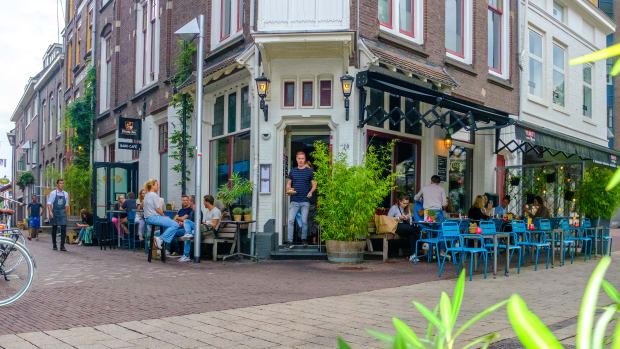
Willemijn van Dolen | How to make sure you don’t tip out of guilt
After a fun night out with friends or colleagues, it’s time to pay the bill. How much tip should you leave? Columnist Willemijn van Dolen suggests that a watching staff member can undermine a generous gesture. “The tip feels ‘tainted’ because it’s given under pressure, rather than being a genuine signal of generosity.”
The academic year has started again! The campus is buzzing, the sun is shining, and the city is alive. After a week full of lectures, Friday afternoon is the perfect time for a terrace drink. And then comes the inevitable moment: paying the bill. The cheerful staff member stands next to me with one of those handy mobile payment devices. And I wonder—does it matter how they handle this moment?
Because whereas I used to leave the tip on the table, now they’re standing right next to me. And somewhere in the back of my mind, I feel an invisible social pressure. I’m face-to-face with the employee while making the most voluntary payment of the whole transaction: the tip. This lack of privacy when tipping somewhat disrupts the experience.
Research shows I’m not alone; many people feel compelled to press the tip button while the staff member watches. This is also called “guilt tipping.” The customer feels they have less control over the decision.
But it’s not just about control. It’s also about the feeling of generosity. Customers often want to give something extra genuinely, but when they are observed by the person benefiting from the tip, the act feels less altruistic. The tip feels “tainted” because it’s given under pressure rather than as a clear signal of generosity.
While this observation might earn the staff member a higher tip at that moment, research shows it comes with a hidden cost for the restaurant. When customers feel uncomfortable, they restore their lost sense of control in other ways. How? They are less likely to return and speak less positively about the café. What helps? At the moment of payment, the staff member should step back and look away.
With digital payments, things don’t seem ideal for either party. Restaurateurs report that tips have decreased since digital payments became common. Some places, especially in Amsterdam, have introduced tip suggestions on the screen, such as five, ten, or fifteen percent. But research from the U.S. shows this doesn’t improve the situation. Most people feel irritated. Why? Because their freedom to tip what they want feels threatened. It comes across as unsolicited advice, making the restaurant less enjoyable. And these suggestions don’t even lead to higher tips, according to researchers—just irritation, not more money.
My tip for tipping? Give the customer a small moment of heroic generosity—without advice and without staring. Then I’ll happily come back, order another round, and tip generously. Promise.

